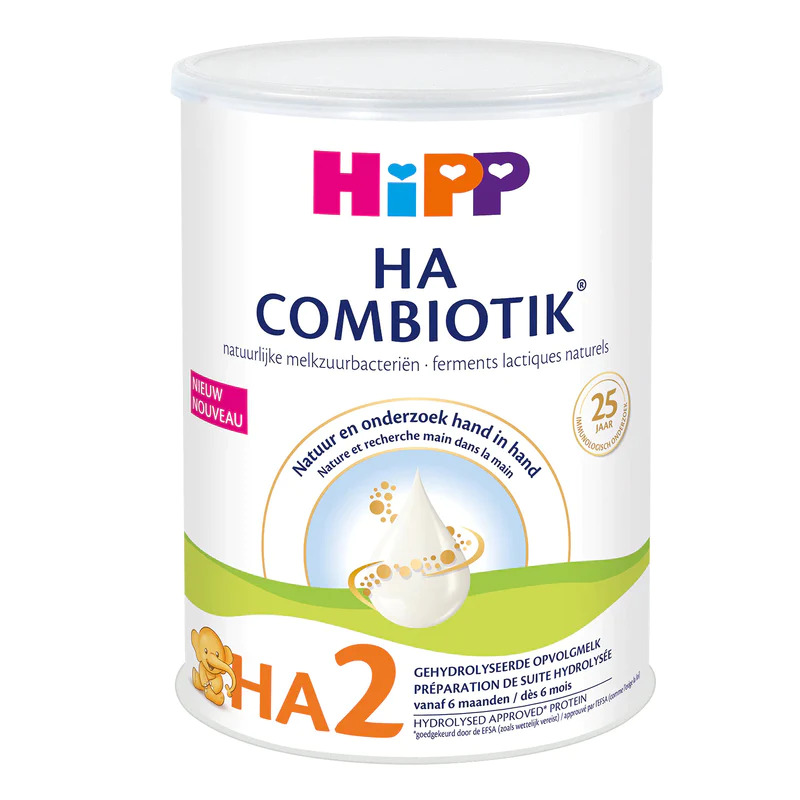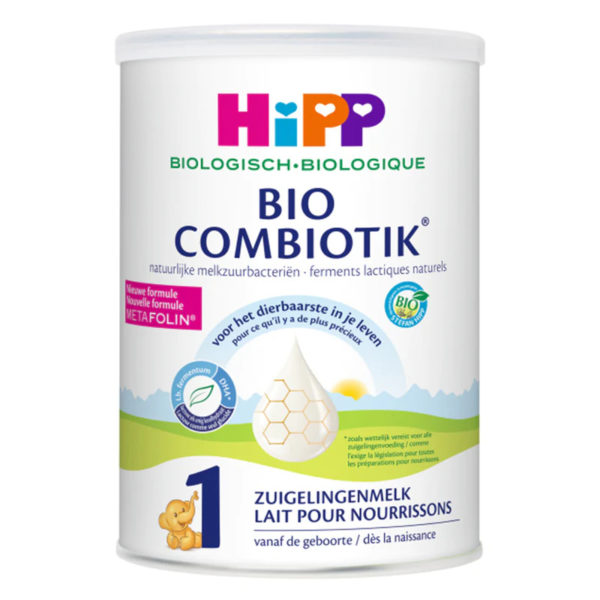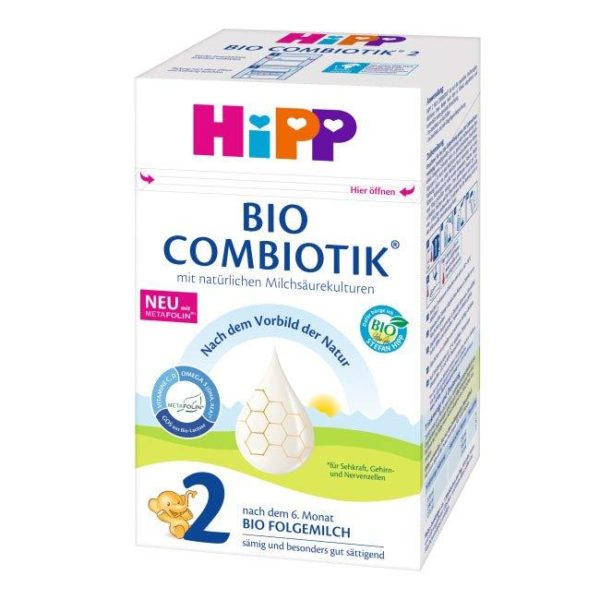25 years of research has led to the recipe of HiPP HA COMBIOTIC®, a formula specially tailored to the nutritional needs of sensitive babies. What makes it so special is the carefully hydrolyzed protein it contains, as it is much better tolerated by infants. The unique combination of natural lactic acid cultures and valuable fibers is important for the baby’s development.
HiPP Dutch HA 2 – Hypoallergenic Formula from 6 Months (800g)
$62.99
Shipping from New York
Restocking next week
Ingredients
LACTOSE, vegetable oils (palm oil, rapeseed oil, sunflower oil), HYDROLYZED WHEY PROTEIN, galacto-oligosaccharides of LACTOSE, calcium salts of orthophosphoric acid, potassium chloride, emulsifiers: mono- and diglycerides of fatty acids esterified with citric acid, FISH OIL^1, potassium hydroxide, sodium hydroxide, calcium carbonate , L-phenylalanine, L-tyrosine, magnesium carbonate, sodium selenite, vitamin C, L-tryptophan, zinc sulfate, L-histidine, iron sulfate, potassium iodate, niacin, pantothenic acid, natural lactic acid culture (limosilactobacillus fermentum hereditum®^2), vitamin E, copper sulfate, vitamin B₂, vitamin B₁, vitamin A, vitamin B₆, manganese sulphate, calcium L-methylfolate^3, D-biotin, vitamin K, vitamin D, vitamin B₁₂, ^1 contains DHA (as required by legislation for all infant formula), ^2 Limosilactobacillus fermentum CECT5716, ^3 Calcium L-methylfolate = Metafolin®.
Nutritional Information
Preparations
From birth
Preparation of the bottle: Carefully follow the following advice: –
Use a carefully washed and sterilized feeding bottle, teat and ring. – Only use the measuring spoon that is in this tin. – Always prepare the bottle just before meals and give it to your baby immediately. The bottle should be consumed within half an hour. Wash your hands well and sterilize the feeding bottle, teat and ring in boiling water for 10 minutes.
1 Boil fresh drinking water and let it cool to approximately 40°-50°C*.
2 Pour the cooled water into the bottle in the correct amount.
3 Fill the measuring spoon loosely and level it. Add the recommended amount of milk powder to the baby bottle. 4. Close the bottle and shake vigorously.
5 Allow to cool to drinking temperature (approximately 37°C). Check the temperature.
Now it is ready! * To avoid damaging the natural lactic acid bacteria, it is advisable not to pour boiling water on the milk powder.
Feeding Schedule
Drinking amount & dosage: Always use 1 measuring spoon (4.4 g) for 30 ml of water
- Age: 1st-2nd week*; Water: 60ml; Measuring spoons: 2; Number of bottles per 24 hours: 7-8
- Age: 3-4 weeks; Water: 90ml; Measuring spoons: 3; Number of bottles per 24 hours: 5-7
- Age: 5-8 weeks; Water: 120 ml; Measuring spoons: 4; Number of bottles per 24 hours: 5-6
- Age: 3-4 months; Water: 150ml; Measuring spoons: 5; Number of bottles per 24 hours: 5
- Age: 5 months**; Water: 180 ml; Measuring spoons: 6; Number of bottles per 24 hours: 4-5
- Age: from 6 months; Water: 210 ml; Measuring spoons: 7; Number of bottles per 24 hours:
- *unless your doctor advises otherwise. **From the 5th month, you can start solid food and porridge in consultation with your doctor. Bottle feeding must be eliminated with each new meal of solid food. The recommended drinking amount and the number of portions per day are guideline values. Your child does not necessarily have to finish the bottle. Use – from birth as the only food or in combination with breast milk save This can should be stored in a cool, dry place. After opening, the well-sealed can of HiPP HA 1 Combiotik® milk powder can be stored for 3 weeks in a dry place at room temperature. risk warning …in case of cow’s milk protein allergy: do not use in case of cow’s milk protein allergy or suspicion thereof. … for the health of your baby’s teeth: Regular or prolonged contact of the teeth with liquids containing carbohydrates can cause caries and thus damage health. Teach your child good dental hygiene from the first baby teeth onwards – especially before going to sleep. IMPORTANT: Inadequate preparation or use of this product may harm your child’s health. – Do not heat the milk in the microwave (risk of scalding). – Do not reuse leftover milk. – Check the expiration date on the bottom of the can.





Reviews
There are no reviews yet.